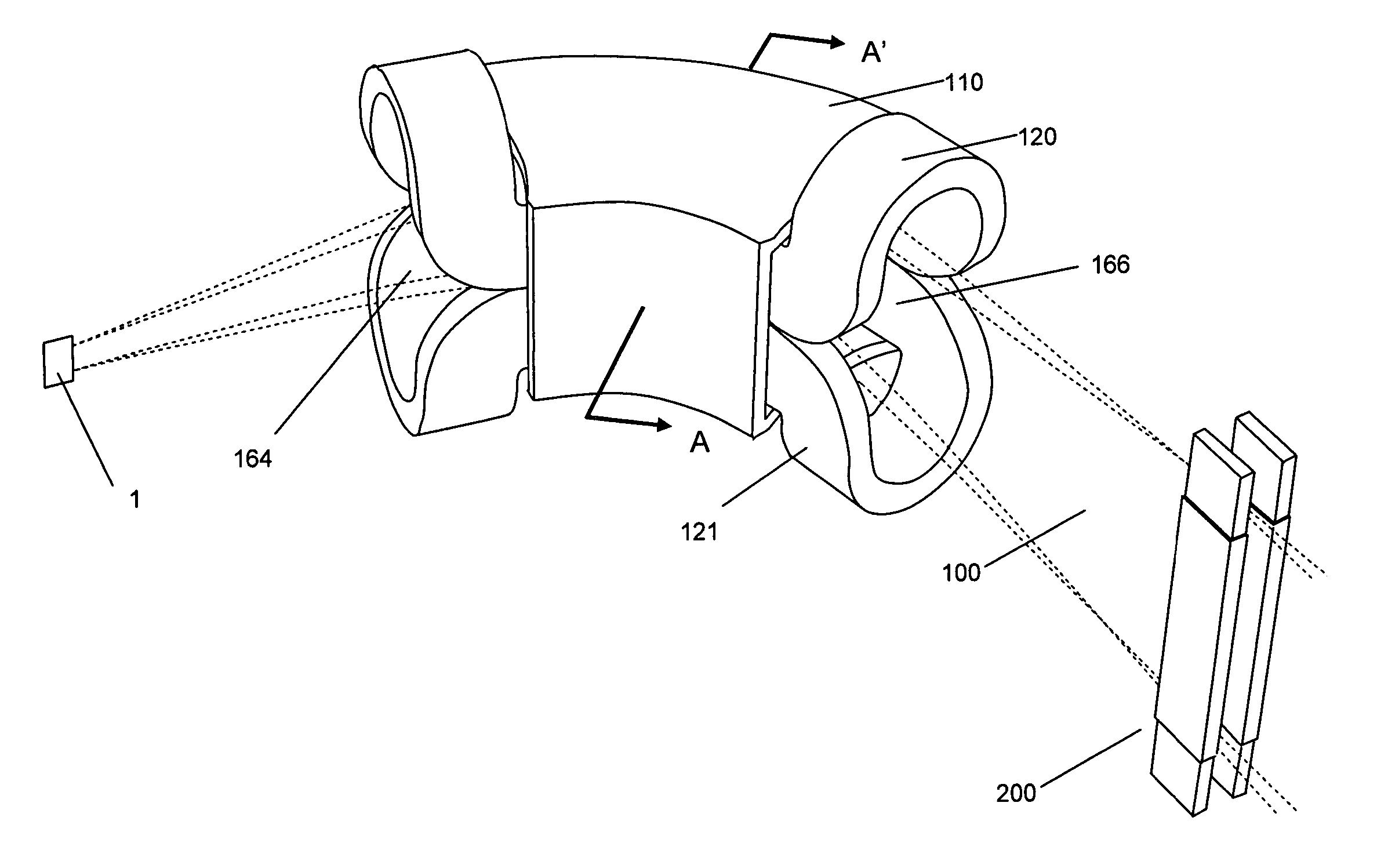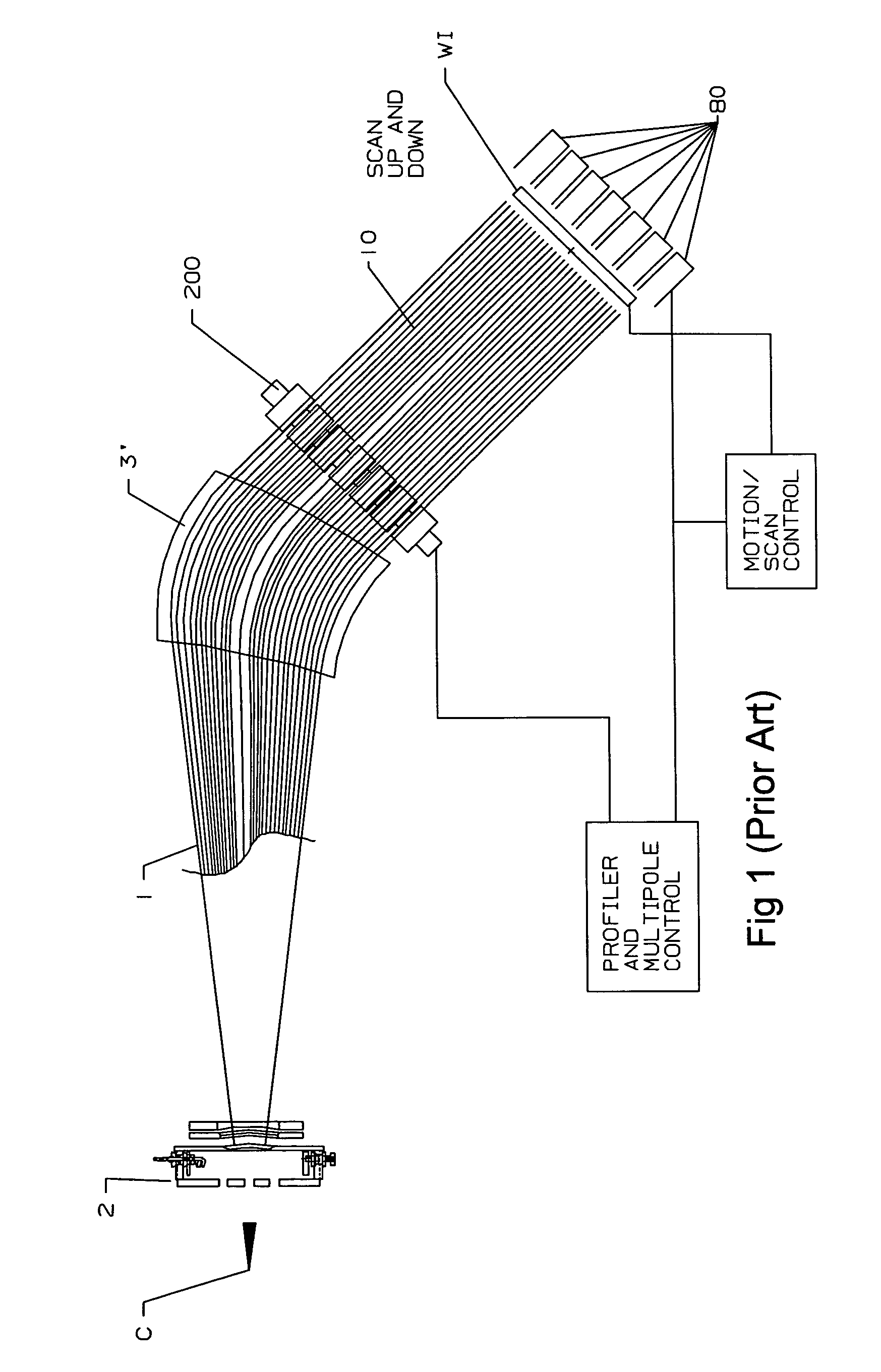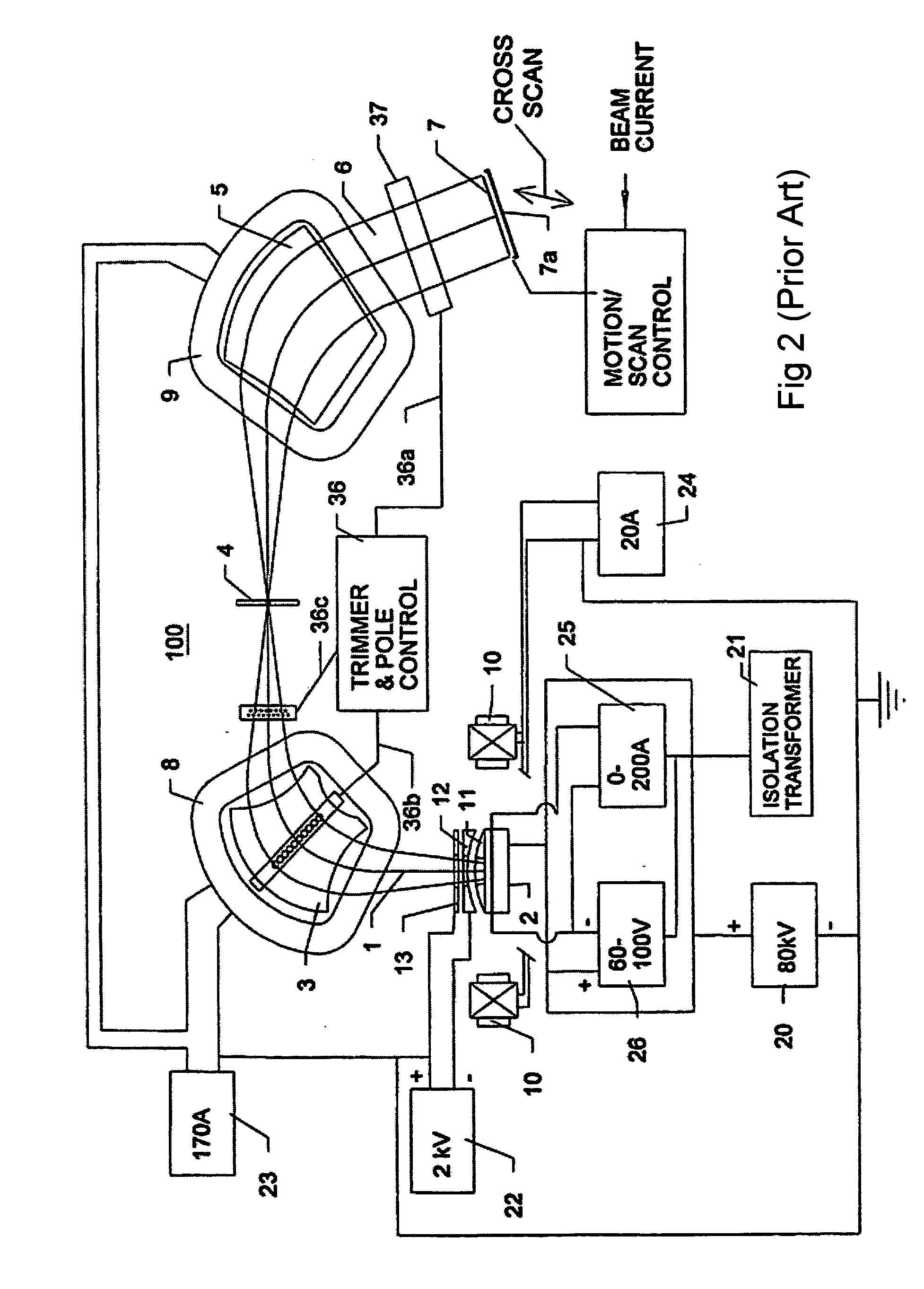High aspect ratio, high mass resolution analyzer magnet and system for ribbon ion beams
- Summary
- Abstract
- Description
- Claims
- Application Information
AI Technical Summary
Benefits of technology
Problems solved by technology
Method used
Image
Examples
first preferred embodiment
[0106] A first preferred format for the present invention is illustrated by FIGS. 4, 5 and 6. As seen therein, a single deflection magnet bends the ribbon-shaped ion beam through an angle of at least 45 and preferably less than 110 degrees. The ferromagnetic yoke of the dipole magnet is essentially rectangular in overall cross-sectional appearance; although the true shape of the yoke may be slightly modified to enhance the ion optics, as will be described later herein.
A. The Axis and Intended Pathway for the Traveling Ribbon Ion Beam
[0107] For descriptive purposes, it is presumed that the major beam axis is vertical, and that the beam is traveling horizontally. The intended pathway of the center of the beam is referred to as the desired “beam axis”; and the “beam axis” comprises a first straight section, a curved section and a second straight section. This curvilinear beam axis lies in a plane, the midplane of the intended pathway.
[0108] Clearly, the beam axis provides the intend...
PUM
 Login to View More
Login to View More Abstract
Description
Claims
Application Information
 Login to View More
Login to View More - R&D
- Intellectual Property
- Life Sciences
- Materials
- Tech Scout
- Unparalleled Data Quality
- Higher Quality Content
- 60% Fewer Hallucinations
Browse by: Latest US Patents, China's latest patents, Technical Efficacy Thesaurus, Application Domain, Technology Topic, Popular Technical Reports.
© 2025 PatSnap. All rights reserved.Legal|Privacy policy|Modern Slavery Act Transparency Statement|Sitemap|About US| Contact US: help@patsnap.com



